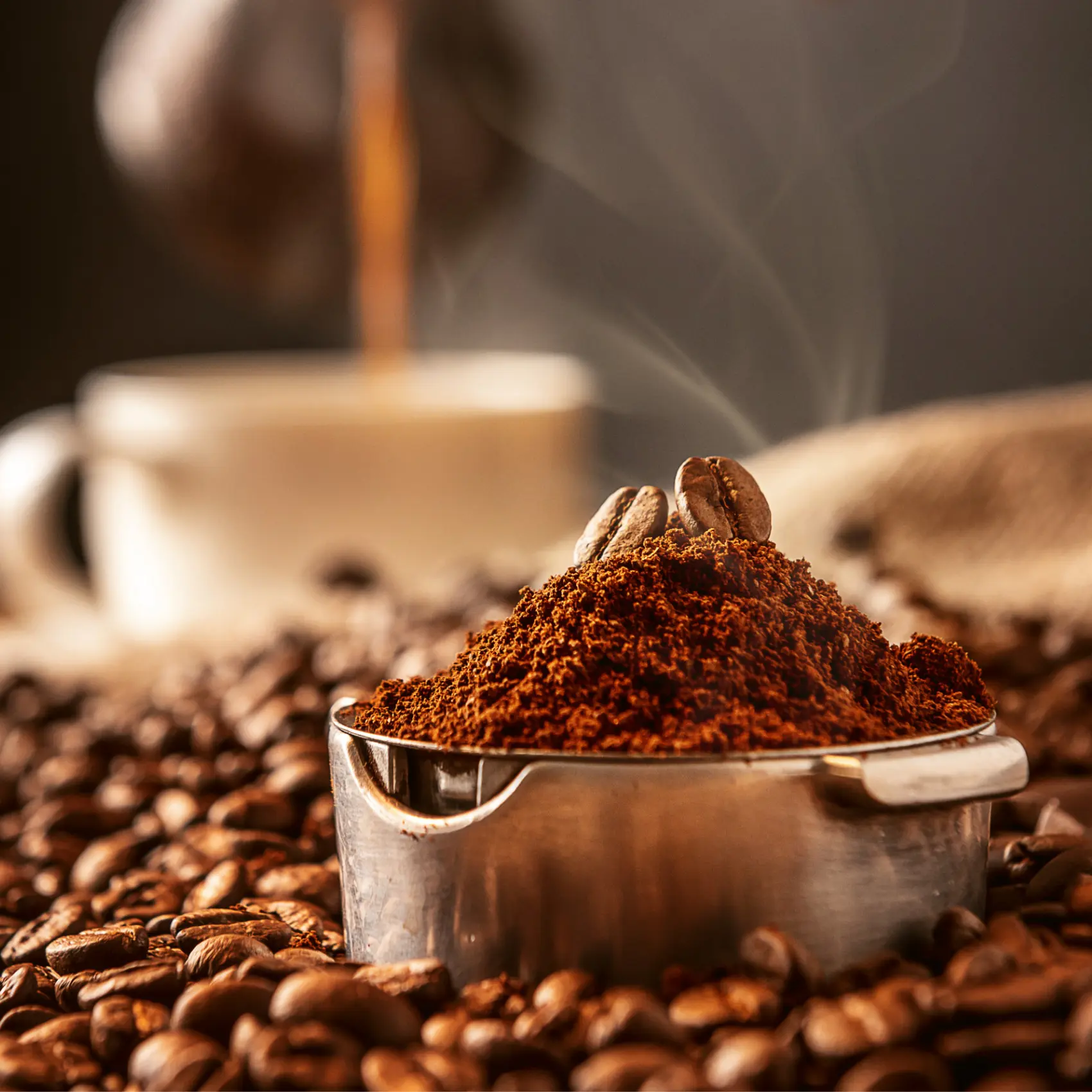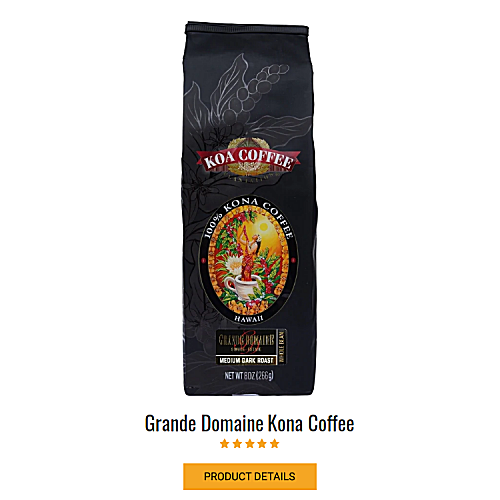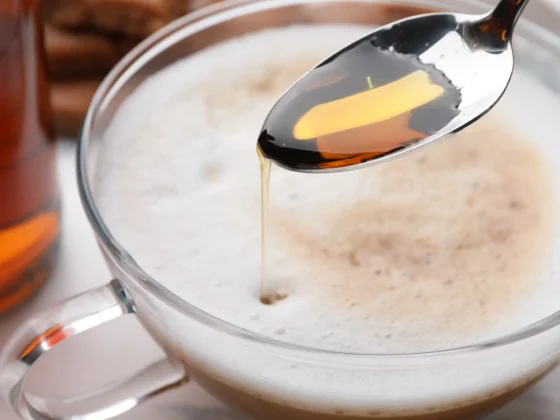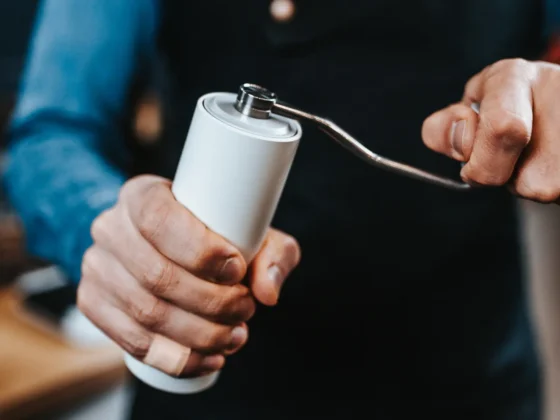The debate between whole bean vs ground coffee is more than just a skirmish over taste preferences; it’s a multifaceted exploration into the rich and intricate world of coffee. This comprehensive guide aims to enlighten you on not just the aroma and freshness associated with each type, but also on the optimal extraction techniques, storage methods, and even the economic and environmental ramifications of your choice. Whether you’re a casual sipper or a seasoned coffee aficionado, this guide will arm you with the knowledge you need to make an informed decision that aligns with both your taste buds and your ethical considerations.
Whole Bean Coffee vs Ground: Key Takeaway
- Whole Bean Longevity: Whole bean coffee retains its freshness and flavor for longer, allowing for a prolonged peak taste experience compared to its ground counterpart.
- Ground Coffee Expediency: Ground coffee offers quicker access to its peak flavor, but compromises the duration of freshness and aroma retention.
- Optimal Storage Differentiation: Proper storage methods vary significantly; whole beans thrive best when stored unground, while ground coffee’s freshness can deteriorate rapidly after processing.
- Economic & Environmental Considerations: The choice between whole bean and ground coffee has broader implications, including the sustainability of farming practices and the environmental impact of each form.
- Evolution of Consumption Patterns: From the discovery of coffee cherries to modern brewing methods, the way we consume coffee has evolved, impacting the popularity and perceptions of whole bean vs ground coffee.
Understanding the Basics
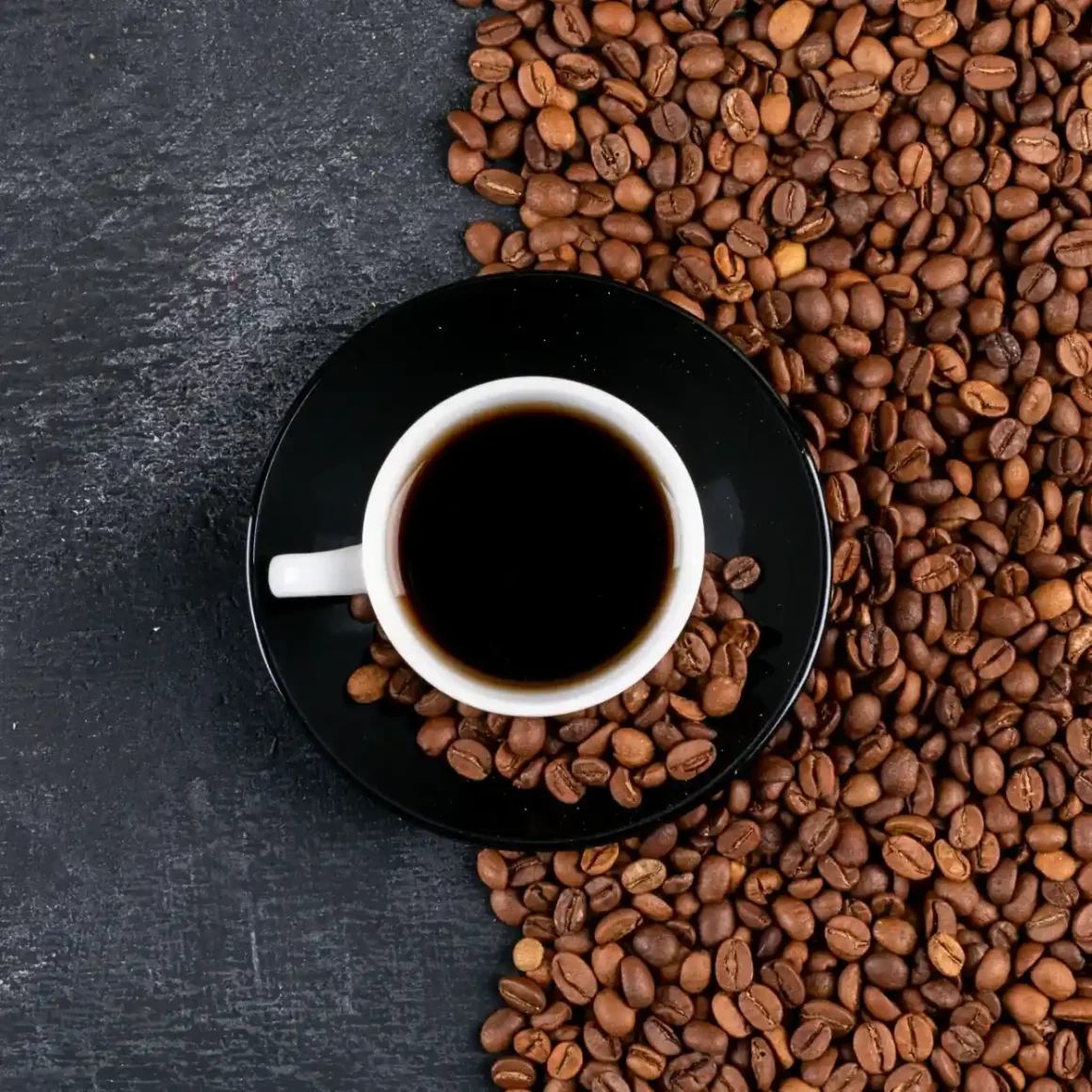
Coffee is more than just a daily ritual; it’s a subject rich with variety and complexity. To truly appreciate the beverage, it’s essential to understand the basics, starting with the type of coffee beans you buy: whole or ground. This knowledge will not only enhance your brewing experience but also elevate your coffee game. Let’s dive into the fundamental differences between whole-bean coffee and ground coffee.
What is Whole Bean Coffee?
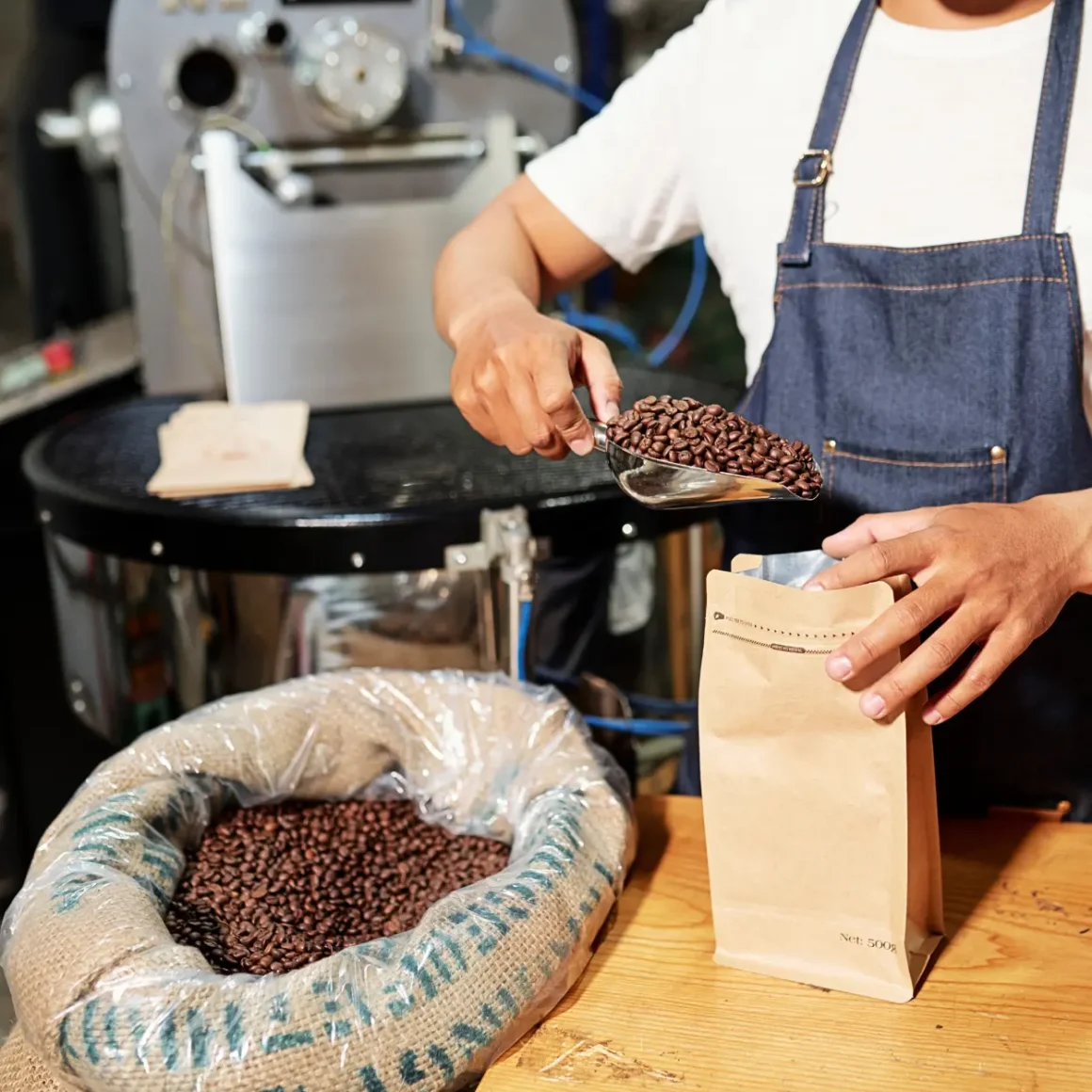
Whole bean coffee refers to coffee beans that have been roasted but are still in their original bean form. Unlike ground coffee, whole beans require an additional step before brewing—you have to grind them yourself. This offers certain advantages:
- Freshness: Grinding your own beans ensures that the coffee maintains its essential oils and aroma until the very last moment.
- Customization: You have the freedom to grind to the coarseness level that suits your brewing method, be it French press, espresso, or drip coffee.
Opting for whole bean coffee is generally recommended for those who seek a richer, fresher cup of coffee and don’t mind putting in a little extra effort.
What is Ground Coffee?
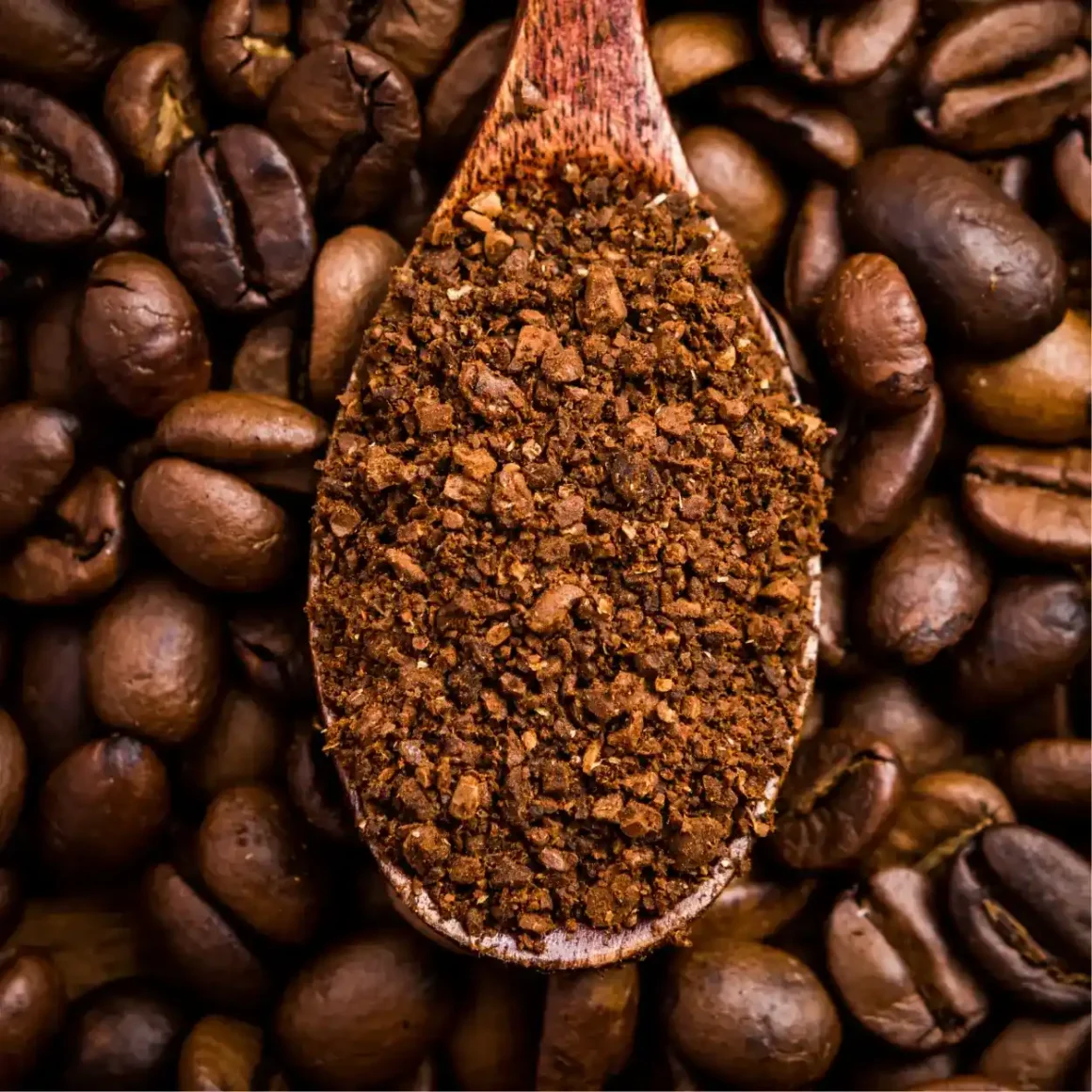
Ground coffee is the more convenient option for many, primarily because it eliminates the grinding process from your morning routine. These beans have been ground in advance by the supplier and are ready to be brewed. Ground coffee offers:
- Convenience: No need to grind; simply measure the required amount and start brewing.
- Speed: The absence of the grinding process can expedite your morning coffee ritual.
If you’re someone who values convenience over customization, ground coffee is the choice for you.
Coffee Bean Anatomy: Understanding the Differences
When discussing whole bean coffee vs ground, it’s crucial to understand the anatomy of the coffee bean. A coffee bean is composed of various layers, including the outer cherry, mucilage, parchment, and, ultimately, the bean itself, which contains the oils and flavors we cherish.
- Conservation: Whole beans preserve these oils and flavors for a longer period because they have less surface area exposed to air.
- Degradation: In contrast, ground coffee has a larger exposed surface area, which means it loses its flavors and oils more quickly.
The form in which you buy your coffee can significantly impact its flavor, shelf life, and your overall coffee experience.
Flavor and Aroma

When it comes to coffee, two elements that profoundly impact our experience are flavor and aroma. While these aspects are intrinsically tied to how the coffee is processed and prepared, the form in which you buy your coffee—whole bean or pre-ground—also plays a vital role. This article will explore how each form affects the flavor and aroma, diving deep into their respective profiles.
The Aroma Advantage of Whole Bean Coffee
Whole bean coffee offers a multitude of advantages when it comes to preserving aroma, a key element that heightens the overall coffee experience.
- Long-lasting Aroma: Whole bean coffee retains its aroma for a considerably longer period—up to 15 to 20 days more compared to pre-ground coffee.
- Degassing Period: The process of degassing in whole bean coffee takes longer, which is actually beneficial. It allows the coffee more time to mature, thereby enhancing its scent.
- Best Time to Brew: Whole bean coffee reaches its peak aroma and flavor between the 7th and 10th day after roasting, maintaining that quality up until around the 15th to 21st day.
Choosing whole bean coffee not only provides you with a richer aroma but also gives you a larger window to enjoy the coffee at its aromatic peak.
Ground Coffee’s Flavor Profile
Pre-ground coffee might seem like a convenient option, but when scrutinized for flavor, several challenges emerge.
- Peak Freshness: Pre-ground coffee reaches its highest level of freshness and aroma much sooner than whole bean coffee, typically in under 10 days.
- Quick Degradation: After reaching its peak, pre-ground coffee’s flavor deteriorates at a more rapid pace.
- No “Dialing In”: With pre-ground coffee, you miss out on the opportunity to “dial in” your grind size to get the most out of your brew as it ages.
Opting for pre-ground coffee might offer initial convenience, but you compromise on both the duration and quality of flavor.
Freshness and Flavor: A Delicate Balance
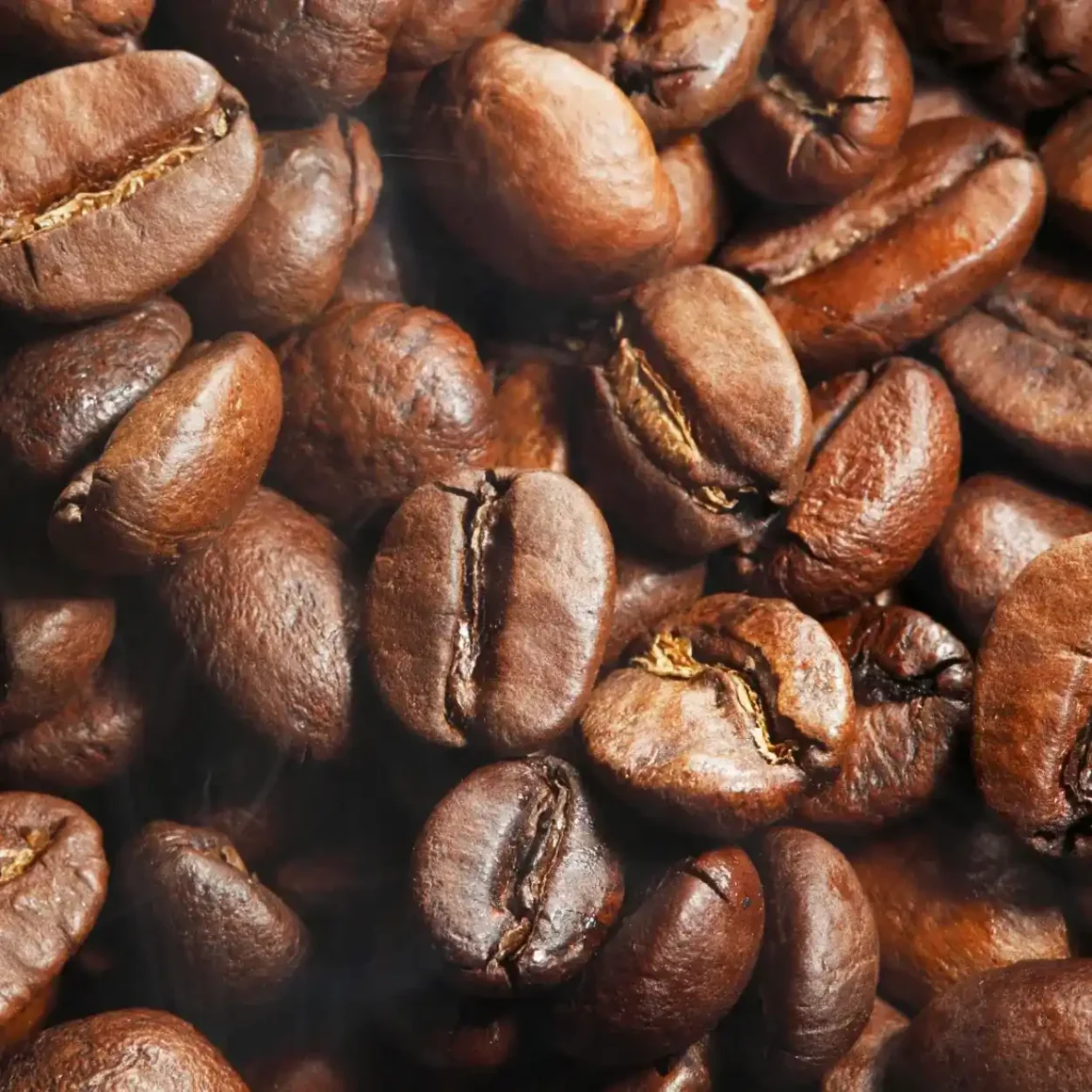
When it comes to coffee, there’s a delicate balance between freshness and flavor, both of which are impacted by the form in which the coffee is purchased and stored.
- The Degassing Dilemma: Coffee, whether whole bean or ground, goes through a coffee degassing phase after roasting. For whole beans, this lasts about 2-3 weeks, giving it time to mature its flavor profile. In contrast, pre-ground coffee degasses more quickly, shortening the time it can be brewed at peak flavor.
- Roast Type and Aging: Lighter roasted coffee degas more slowly than darker roasts. This affects how quickly the flavors and aroma dissipate over time.
- Freezing for Freshness: Whole bean coffee can be frozen to extend its peak freshness, a technique often employed by specialty coffee shops. This is less effective with ground coffee.
Understanding the nuanced balance between freshness and flavor can guide you in making an informed decision about purchasing whole bean versus pre-ground coffee.
Understanding Extraction
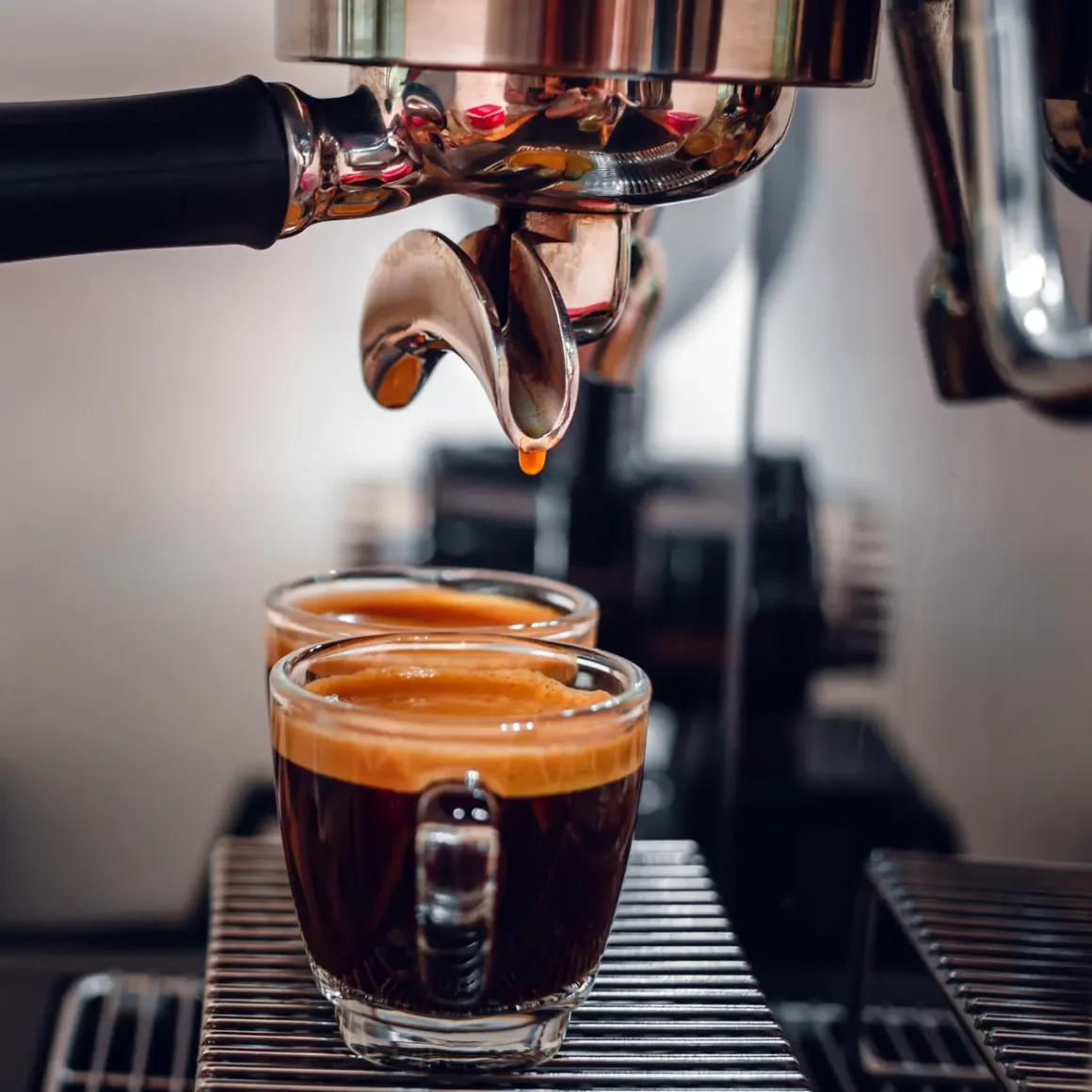
The extraction process is a pivotal component in determining the quality of your brewed coffee. It refers to the act of pulling flavors, aromas, and other compounds from coffee grounds during brewing. (1) Achieving the right balance between under-extraction and over-extraction can be the difference between a lackluster cup and a sublime coffee experience. In this section, we’ll delve into how grinding size affects this crucial process and offer expert tips to nail the perfect extraction every time.
How Grinding Size Impacts Extraction
The size of your coffee grounds plays an indisputable role in the extraction process. A mismatch between your brewing method and ground size can result in an unappealing cup of joe.
- Coarse vs Fine: Coarse grounds are generally suited for slower brewing methods like French Press, while fine grounds are tailored for quick methods like espresso.
- Over-Extraction Risks: Using too fine a grind for a slow brewing process could lead to over-extraction, making your coffee bitter and hollow.
- Under-Extraction Risks: Conversely, using a coarse grind in a quick brewing process like espresso will likely result in under-extraction, leading to a sour, weak cup.
Selecting the right grinding size is a critical aspect of achieving the desired extraction, thus influencing whether you opt for ground coffee vs whole bean.
Expert Tips for Perfect Extraction
Mastering the art of extraction can be a rewarding endeavor. However, it often requires more than just picking the right grinding size. Below are some expert tips to guide you in perfecting this process.
- Water Temperature: The ideal water temperature for most brewing methods is between 195-205°F. Too hot or too cold water can lead to undesirable extraction.
- Brew Time: Adjusting the brewing time according to the grind size is crucial. A French Press may require 3–4 minutes, while an espresso shot takes only about 25–30 seconds.
- Dialing In: As coffee ages, it might require adjustments in grind size for optimal extraction. This is where owning a good grinder can give you the advantage of “dialing in” your coffee for each brew.
- The Right Tools: A high-quality grinder, fresh water, and a reliable brewing method are indispensable in achieving the perfect extraction.
By adhering to these expert guidelines, you not only elevate the quality of your coffee but also expand your understanding and appreciation for the nuanced craft of coffee extraction.
Freshness & Quality: The Battle Between Whole and Ground
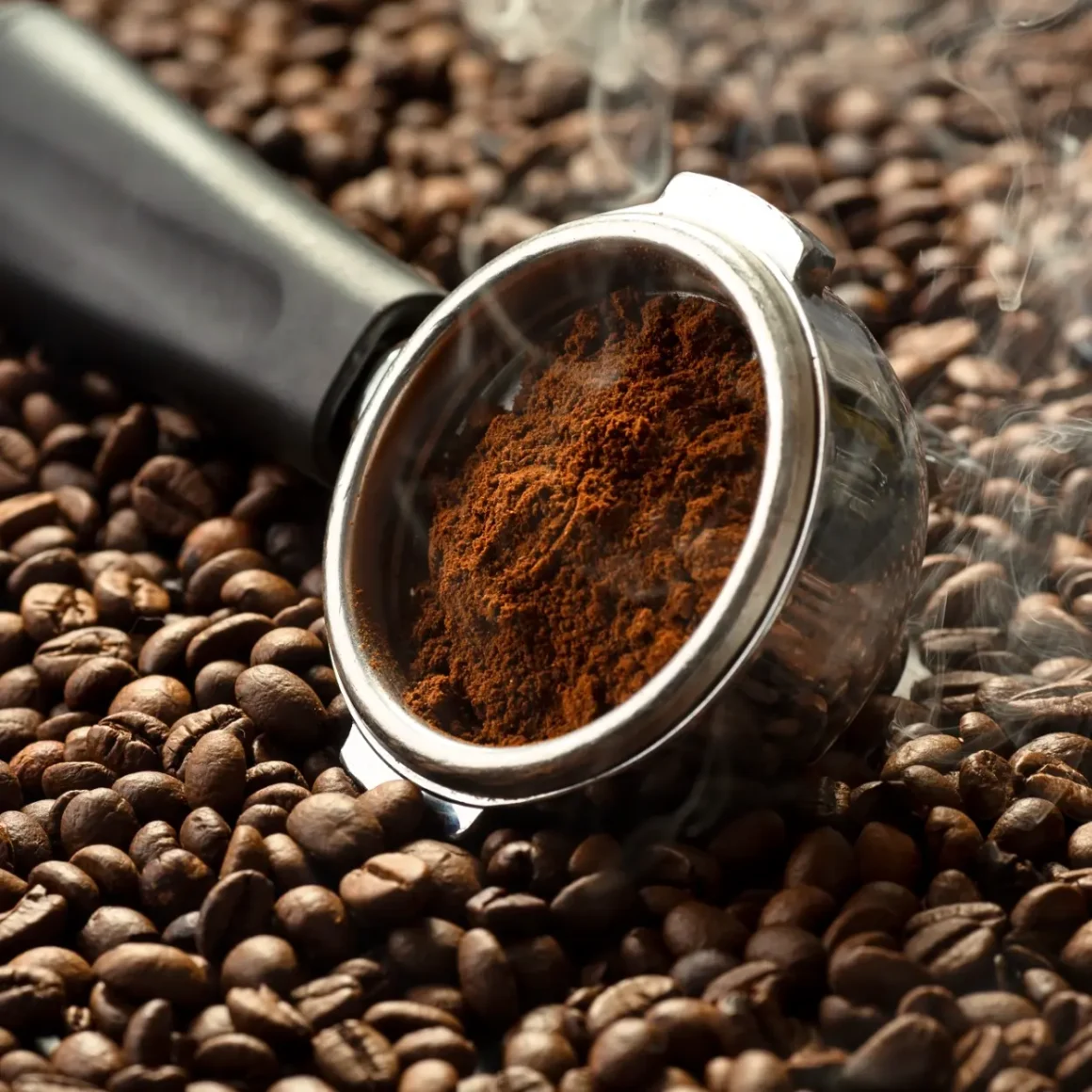
When it comes to coffee, freshness, and quality often go hand in hand. The type of coffee you choose—be it whole bean or ground—can significantly affect these two crucial elements. While both forms have their merits, there are key differences to consider in the longevity and preservation of flavor and aroma. In this section, we’ll dissect how whole bean and ground coffee fare in maintaining freshness and quality, helping you make an informed choice for your next brew.
How Coffee Beans Preserve Freshness
As previously discussed, whole bean coffee has a reputation for preserving freshness more effectively than its ground counterpart. The bean acts as a natural protective barrier, keeping the interior untouched and rich in volatile aromatic compounds.
- Slow Degassing: Whole bean coffee takes a longer time to release accumulated gases from the roasting process, thereby extending the period where the coffee reaches its peak flavor potential.
- Aroma Retention: With a slower rate of degassing, the aroma of whole bean coffee lasts 15-20 days longer than that of ground coffee, making it ideal for those who value the scent as much as the taste.
- Longevity: Whole bean coffee can be stored in airtight containers and even frozen to extend its lifespan, without compromising on quality.
Choosing whole bean coffee offers a consistent edge in maintaining both aroma and flavor, thus making it a preferred option for those seeking to prioritize freshness.
The Lifespan of Ground Coffee
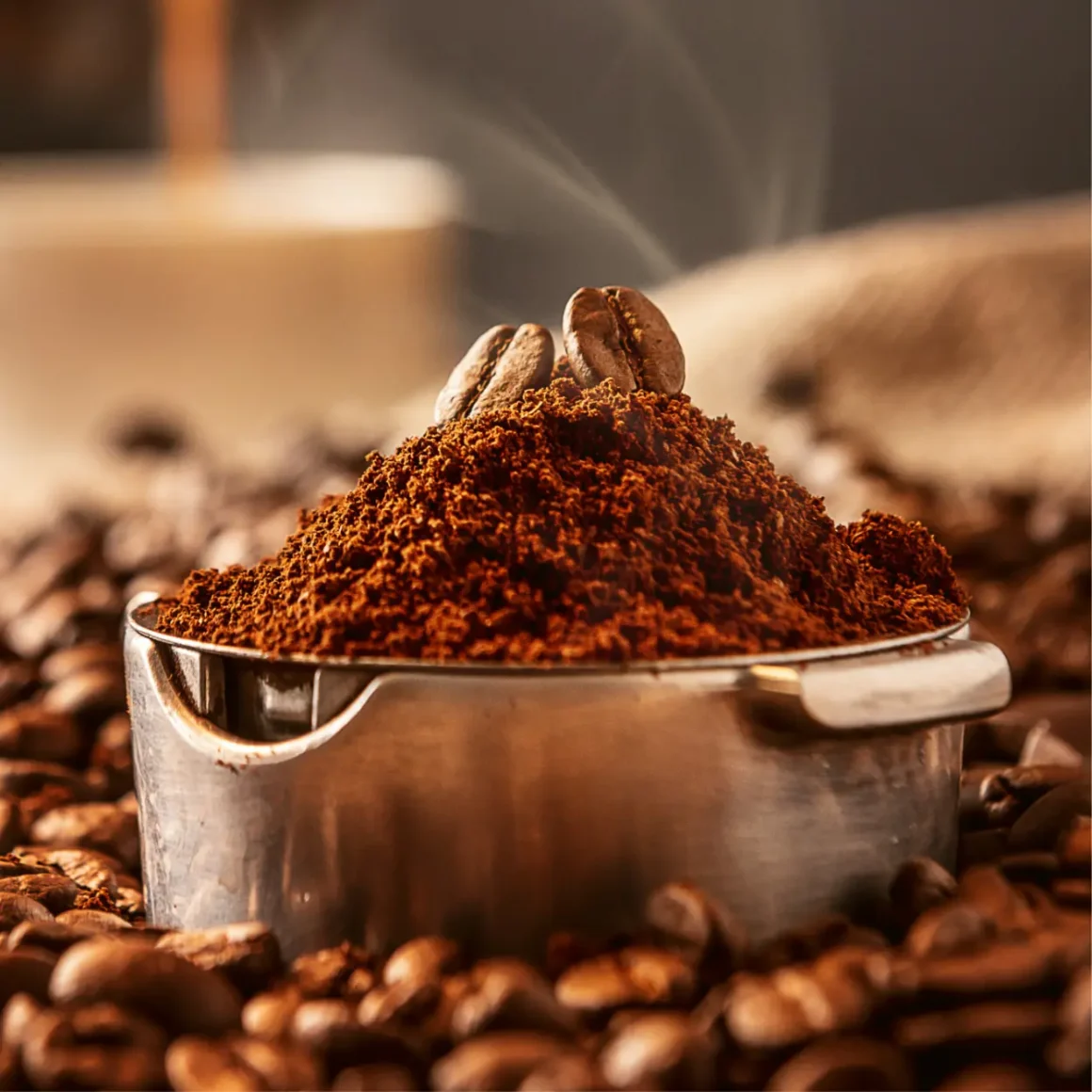
Ground coffee may offer the convenience of quick brewing, but this comes at the expense of a limited lifespan for optimal freshness and flavor.
- Peak Freshness: Ground coffee reaches its pinnacle of freshness within 10 days post-roasting and starts to deteriorate exponentially after that.
- Fast Degassing: Ground coffee releases its gases much more rapidly, shortening the timeframe for peak flavor and aroma.
- Storage Constraints: While it can be stored in an airtight container, freezing ground coffee that has not been immediately stored post-roasting will still result in a product inferior to whole bean coffee in terms of freshness.
Despite its convenience, ground coffee can’t compete with whole bean coffee in the longevity of preserving quality attributes, making it a less ideal choice for coffee connoisseurs.
Factors Affecting Quality and Freshness
While the whole bean vs ground debate often centers on the coffee itself, external factors also play a significant role in determining the freshness and quality of your brew.
- Roast Level: Lighter roasts tend to degas more slowly than darker roasts, affecting the coffee’s longevity irrespective of whether it is whole bean or ground.
- Packaging: Vacuum-sealed bags with one-way valves can help prolong the freshness of both whole bean and ground coffee.
- Environmental Factors: Exposure to air, moisture, light, and temperature changes can quickly degrade the quality of your coffee, making proper storage imperative. (2)
By understanding the external variables that impact coffee quality, you can make better-informed decisions in selecting and storing your coffee, thereby maximizing freshness and taste no matter your preference in the whole bean vs ground coffee debate.
User Experience: Brewing, Storing, and Consuming

When it comes to coffee, the experience isn’t just about that final cup you savor. It’s an encompassing journey that includes storage, brewing, and the subsequent tasting, each phase requiring its unique considerations. Whether you are a beginner or a seasoned coffee enthusiast, understanding the best practices for each step can elevate your coffee experience. In this segment, we delve into optimal storage methods, suited brewing techniques, and how consumer preferences manifest in tasting notes for both whole bean and ground coffee.
Optimal Storage Methods for Each
One of the key steps to consistently enjoying a high-quality brew is storing coffee beans properly. While whole beans and ground coffee have different needs, the right storage practices can extend the life and preserve the quality of your coffee.
- Whole Bean Storage: Airtight containers made of ceramic, stainless steel, or glass are ideal. For longer preservation, it’s possible to freeze whole beans, separating them into weekly portions to avoid frequent freezing and thawing.
- Ground Coffee Storage: Given its faster deterioration rate, ground coffee benefits from a vacuum-sealed container. However, it’s best consumed within a shorter period, as it’s more susceptible to moisture and oxidation.
Adhering to these storage principles can go a long way in ensuring that every cup you brew is as fresh and flavorful as possible, making the effort well worth the reward.
Brewing Techniques Suited for Whole and Ground Coffee
The method you choose for brewing coffee can either accentuate or undermine its inherent qualities. This choice becomes especially crucial when differentiating between whole and ground coffee, as each type lends itself to specific brewing techniques.
- Whole Bean: Whole bean coffee is incredibly versatile, allowing you to grind it according to the brewing method of the day, whether it’s espresso, pour-over, or French Press.
- Ground Coffee: Generally sold with a particular brewing method in mind (e.g., espresso or drip), ground coffee’s limitations become apparent when you desire to switch methods. That said, some ground options are multi-purpose, offering a middle ground in terms of versatility.
By matching the coffee type to the appropriate brewing technique, you not only optimize flavor and aroma but also elevate your overall coffee experience.
Tasting Notes and Consumer Preferences

For many, the ultimate test of a coffee’s quality lies in its tasting notes, a factor often evaluated through coffee cupping sessions. Whether you prefer whole bean or ground coffee could significantly influence these characteristics.
- Whole Bean: Offers a broader spectrum of flavors and aromas, which are retained for a more extended period. This makes it an ideal choice for those who value nuanced tasting notes and the experience of identifying different flavor profiles.
- Ground Coffee: While convenient, ground coffee often has a truncated range of flavors and aromas due to its quicker degradation. However, it still can provide a satisfying cup, particularly for those who prioritize ease of preparation over subtlety in flavor.
Ultimately, your preferences in tasting notes could be the deciding factor in your choice between whole bean and ground coffee, emphasizing the deeply personal nature of the coffee experience.
History and Origin of Coffee Beans
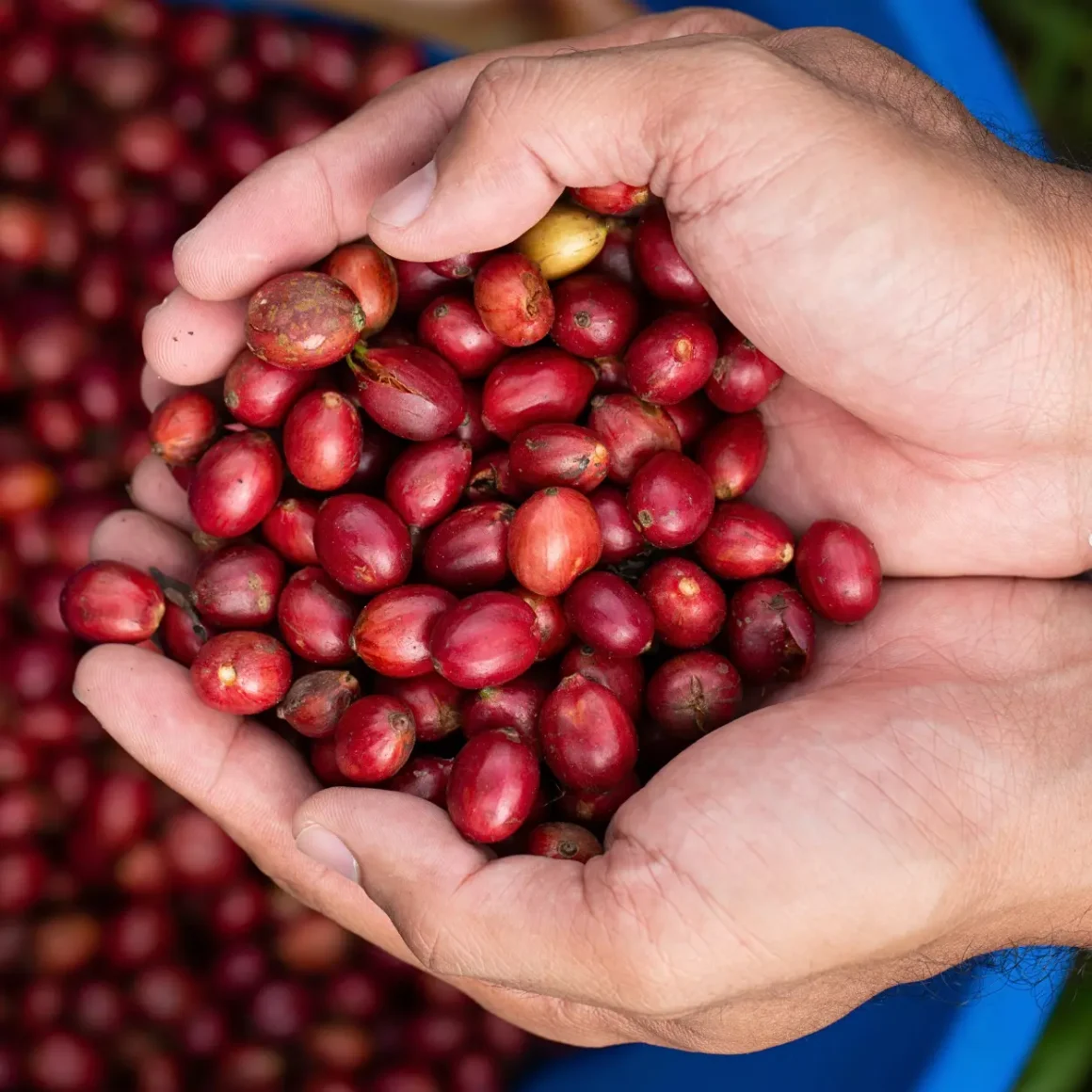
The history of coffee is a fascinating tapestry of trade, innovation, and cultural shifts. From its humble beginnings as a wild cherry to its current status as a global commodity, coffee has undergone significant transformations. This section will walk you through the captivating journey from cherry to bean, delve into the invention of ground coffee, and explore how consumption patterns have evolved over the years.
The Journey from Cherry to Bean
The story of coffee starts with the coffee cherry, a fruit that houses the seeds we know as coffee beans. The process of converting these cherries into beans is intricate and has been refined over centuries. (3)
- Harvesting: Initially, ripe coffee cherries are handpicked from Coffea plants, ensuring that only the best fruits are selected.
- Processing: These cherries then undergo either a dry or wet processing method to separate the pulp from the bean.
- Roasting: The green beans are subsequently roasted at varying temperatures and durations, depending on the desired flavor profile.
- Grinding: Finally, for those who prefer ground coffee, the roasted beans are ground in different sizes to suit various brewing methods.
From the Coffea plant to your morning cup, the journey of the coffee bean is a complex but fascinating process that has been honed over the years to deliver the brews we love today.
The Invention of Ground Coffee
Ground coffee as we know it today is a relatively modern innovation, but the concept of grinding coffee has its roots deep in history, tracing back to the early use of mortars and pestles.
Approximately a millennium after the birth of Christ, it was not Ethiopians or Italians but rather the Arabs who pioneered the art of roasting and pulverizing coffee beans for the purpose of brewing with steaming water. They also took the lead in cultivating coffee plants and establishing their initial coffee estates in Yemen.
- Early Methods: Originally, coffee was consumed in very different formats, including boiling the entire cherries. It took years of experimentation before people began grinding roasted coffee beans, initially using rudimentary methods like hand-cranked mills.
- Industrialization: The Industrial Revolution brought about mechanical grinders that made the process faster and more efficient, leading to the widespread popularity of ground coffee.
- Pre-Packaged Convenience: Today, pre-ground coffee can be found in supermarkets globally, offering an easy, albeit less fresh, alternative to grinding your own beans.
The invention and popularization of ground coffee have democratized its consumption, making it accessible and convenient for coffee lovers worldwide.
Evolution of Coffee Consumption Patterns

The way people consume coffee has evolved significantly, influenced by factors ranging from globalization to technological advancements.
- Coffee Houses: The concept of coffee houses or “cafés” originated in the Middle East and quickly spread to Europe in the 17th century, becoming social hubs for intellectual discourse.
- Instant Coffee: Introduced in the 19th century, instant coffee changed the game by providing a quick and convenient way to make coffee, though often at the expense of quality.
- Specialty Coffee: The late 20th and early 21st centuries have seen a resurgence in interest in high-quality, specialty coffees, driven by third-wave coffee shops and a focus on sustainability and origin.
- Home Brewing: Advances in home brewing equipment have enabled consumers to replicate café-quality coffee in the comfort of their homes, shifting some of the coffee consumption from public spaces back to private ones.
As we continue to innovate and experiment, the ways in which we consume coffee will undoubtedly keep evolving, reflecting the ever-changing social and cultural landscapes.
Economic and Environmental Impacts
Coffee is more than just a morning pick-me-up; it’s a global industry with far-reaching economic and environmental implications. This section delves into the economic value of the coffee trade, explores the importance of sustainable farming and ethical consumption, and compares the environmental footprint of whole bean vs ground coffee.
The Economic Value of Coffee Trade
The coffee industry is an economic powerhouse, generating billions of dollars in revenue each year. It involves a complex web of growers, traders, roasters, and retailers who contribute to its financial footprint.
- Global Scale: Coffee is one of the most traded commodities in the world, second only to oil. It is grown in over 70 countries and is a crucial export for many developing nations.
- Jobs and Livelihoods: The coffee trade provides employment to millions, from farm workers in coffee-producing countries to baristas in urban coffee shops worldwide.
- Challenges: Despite its enormous economic impact, the coffee industry is fraught with inequality. Farmers often receive a small fraction of the profits, even though they bear the brunt of the work and risks.
Understanding the economic value of the coffee trade is essential for consumers, as it sheds light on the industry’s significance and its various challenges, which often go unnoticed.
Sustainable Farming and Ethical Consumption
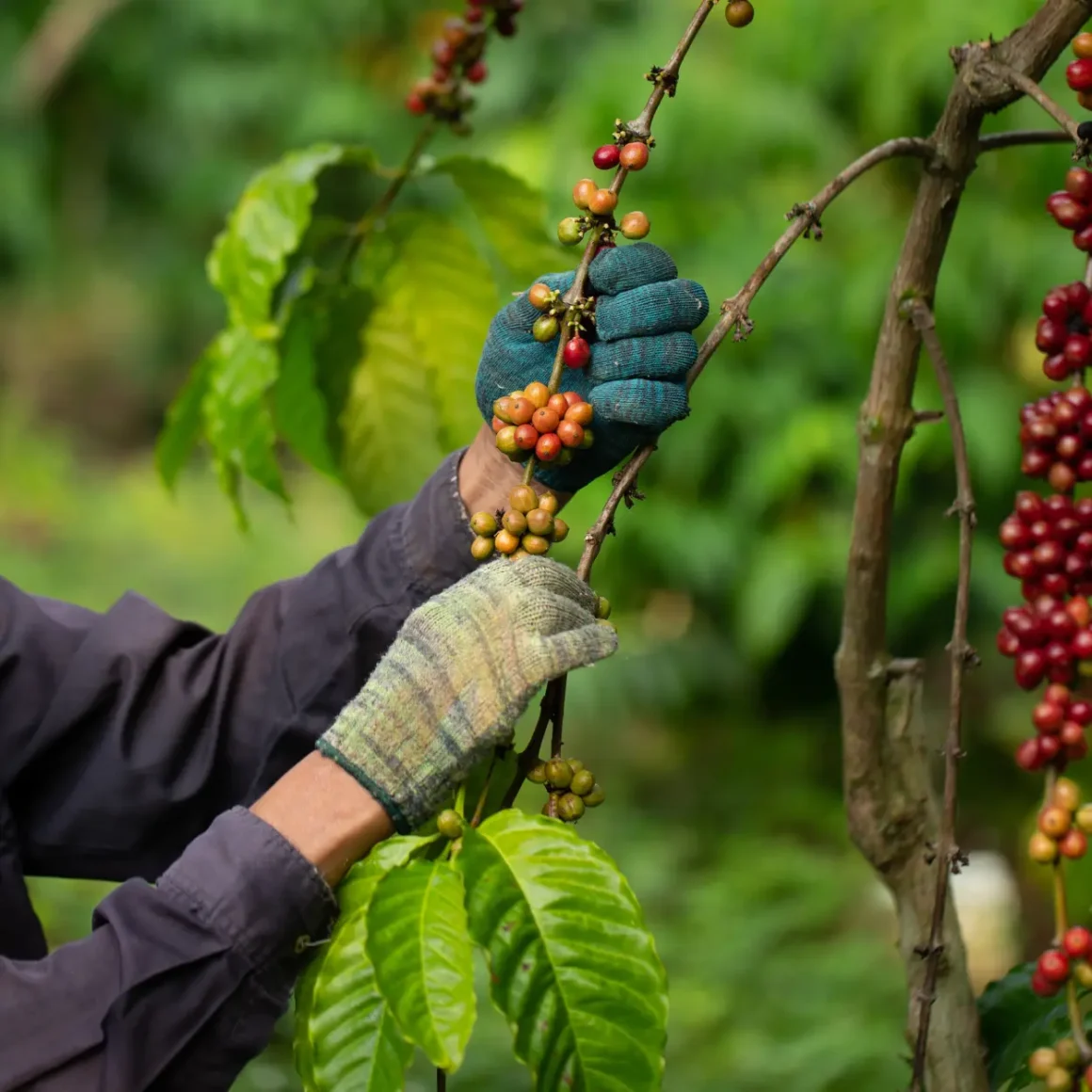
In an era increasingly defined by environmental consciousness, sustainable farming, and ethical consumption have become focal points within the coffee industry.
- Fair Trade: This label ensures that farmers receive a fair price for their crops, helping to alleviate poverty in coffee-growing regions.
- Organic Methods: Organic farming avoids the use of synthetic pesticides and fertilizers, contributing to healthier soil and ecosystems.
- Direct Trade: This practice involves roasters buying directly from growers, often resulting in better quality beans and fairer wages for farmers.
Sustainable farming and ethical consumption practices not only benefit the environment but also enrich the lives of those within the coffee supply chain, from farm to cup.
Environmental Footprint: Whole Beans vs Grounds
The environmental impact of coffee is a growing concern, and the debate about the environmental footprint of whole bean vs ground coffee is one that consumers should consider.
- Packaging: Ground coffee usually involves more packaging material per serving, contributing to greater waste in landfills.
- Energy Use: The energy required to grind coffee at home for whole bean options can be higher; however, this is often offset by the lack of industrial processing and additional packaging.
- Shelf Life: Whole beans have a longer shelf life, reducing the frequency of purchasing and thereby lessening the carbon footprint tied to the logistics of shopping.
While neither option is entirely free of environmental impact, understanding the trade-offs can help consumers make more informed choices that align with their values and concerns for the planet.
Conclusion
When it comes to the debate of whole bean vs ground coffee, several factors come into play. Whole beans generally offer superior freshness, a longer period of peak flavor, and greater versatility in brewing methods. In contrast, ground coffee provides convenience but compromises longevity and flexibility in brewing techniques. Additionally, the choice between the two has broader implications in the coffee industry, touching on economic and environmental sustainability as well as ethical considerations. Armed with the insights from this comprehensive guide, you are now better equipped to make a coffee selection that aligns with both your palate and your principles.
FAQ
What are the primary factors affecting the taste of ground coffee?
The taste of ground coffee is significantly affected by its freshness, which peaks within fewer than 10 days post-roasting, and its grind size tailored to the brewing method used.
How does grind size influence the extraction process?
Grind size directly impacts the surface area exposed during brewing, influencing the rate of extraction; too fine a grind can lead to over-extraction, while too coarse can result in under-extraction.
Which is more sustainable: whole bean or ground coffee?
Whole bean coffee tends to be more sustainable, especially when purchased from ethical sources that employ sustainable farming practices.
What are the storage recommendations for both whole beans and grounds?
Whole beans should be stored in an airtight container, ideally in a cool, dark place. Ground coffee should also be stored in an airtight container but is best consumed as quickly as possible to maintain freshness.
